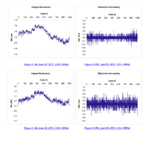zvilupu
Junior Member level 1
Hi all,
after reading the threads regarding INL/DNL i still dont understand something:
i'm simulating a single-slope 12 bit ADC. does it means that for calcuating the DNL i need to run the simulation >(2^12) ?
when i measure INL i simply do an input sweep of ~10 point (from min to max) and calculate the INL (i know it an interpolation...).
but as DNL definition, do i need to calculate each digital code????
i come across the thread: https://www.edaboard.com/threads/188527/
how many samples does i need to input (and in what spread) to use the matlab code of: **broken link removed**
Thanks in advance...
after reading the threads regarding INL/DNL i still dont understand something:
i'm simulating a single-slope 12 bit ADC. does it means that for calcuating the DNL i need to run the simulation >(2^12) ?
when i measure INL i simply do an input sweep of ~10 point (from min to max) and calculate the INL (i know it an interpolation...).
but as DNL definition, do i need to calculate each digital code????
i come across the thread: https://www.edaboard.com/threads/188527/
how many samples does i need to input (and in what spread) to use the matlab code of: **broken link removed**
Thanks in advance...
